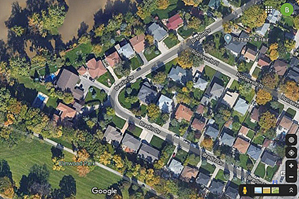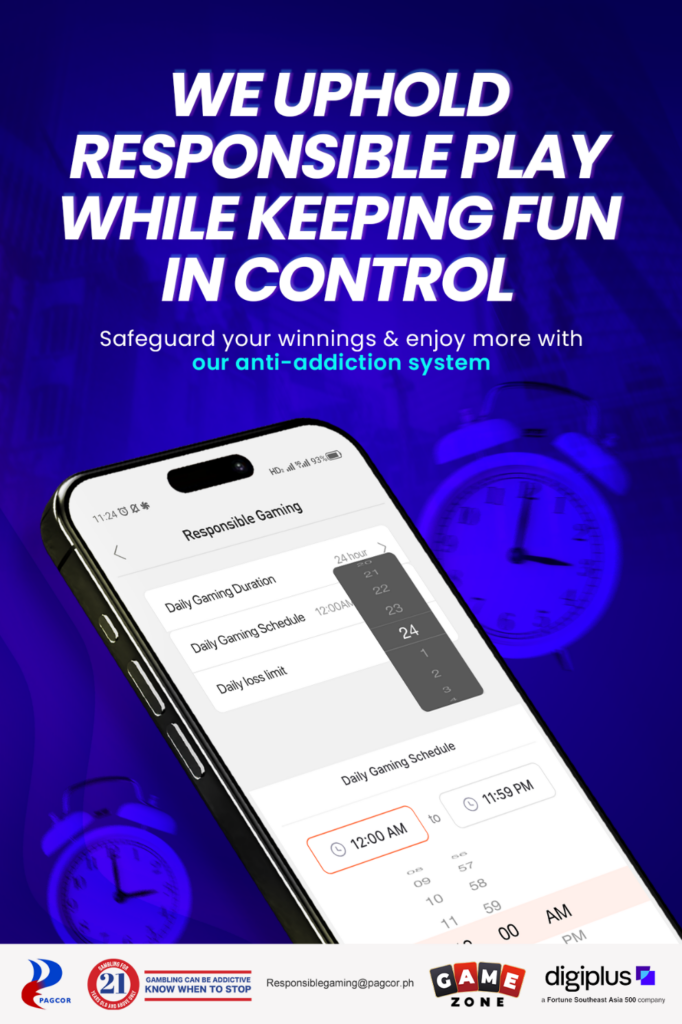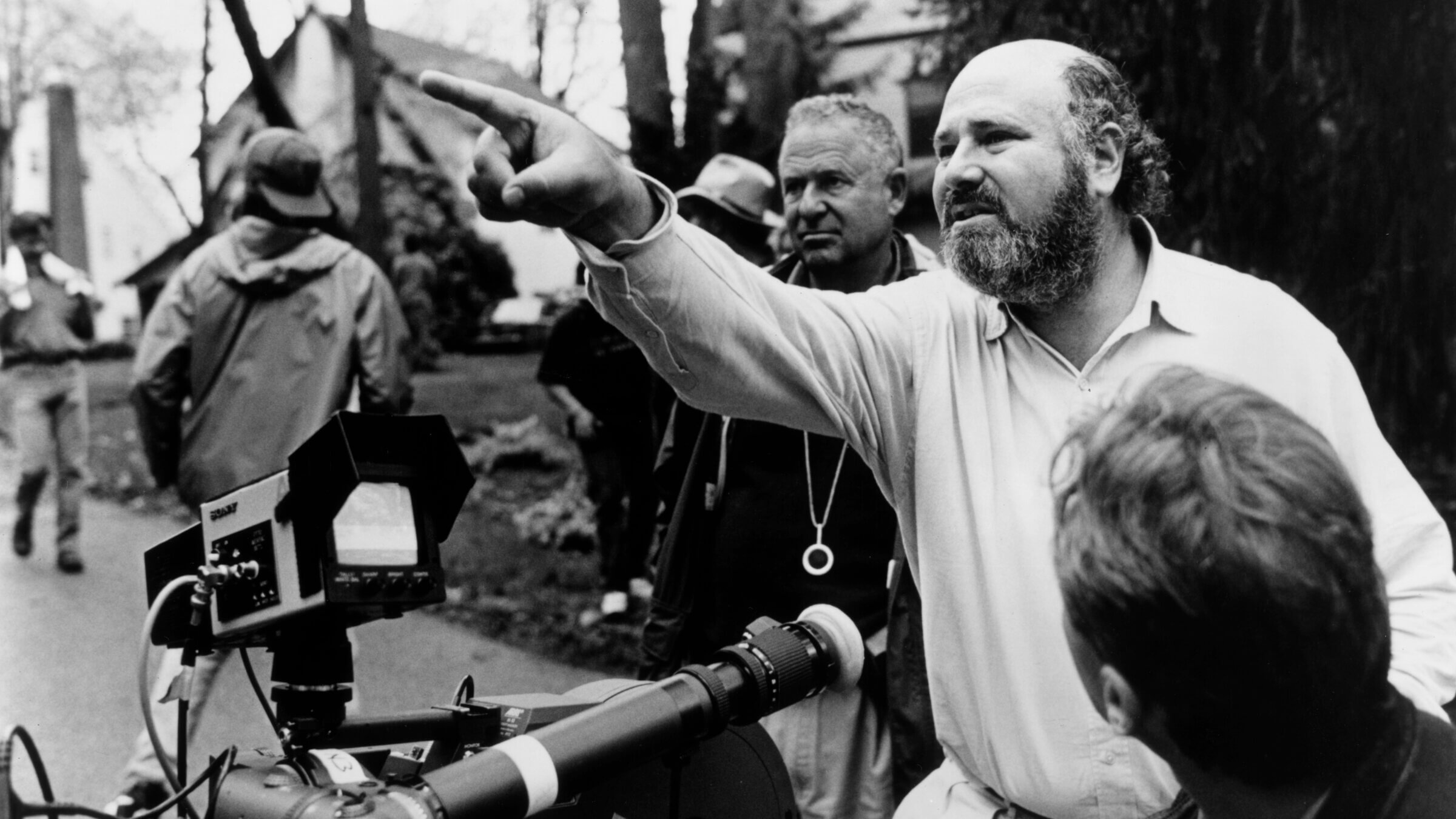Features
A tale of two streets that proved to be very attractive for Jewish families in years gone by

By BERNIE BELLAN Any longtime reader of this paper would know that nostalgia is a recurring theme in much of what you’re going to find in the pages of The JP&N (or on this website – as the case may be). We print stories about the history of our Jewish community here on a regular basis – and those stories usually elicit a flurry of responses from readers, often telling us what we got wrong!
Every once in a while we receive an email from someone asking us whether we can supply information about an individual or a particular story from the past. While we do maintain a digital archive on our own website, it has gaps in it as a result of the poor quality of many of the microfilms that were used to produce our archive.
Luckily, the Jewish Heritage Centre has now developed a much more comprehensive digital archive of all Jewish newspapers that may have existed in Winnipeg at one time or another. To be honest, I find it a little difficult to navigate their archive, but if you persevere, it does have a vast repository of priceless information about the history of our Jewish community.
We’re also lucky to have our very own chronicler of days gone by in the person of Gerry Posner. Six years ago Gerry wrote what proved to be a very popular story about one block of McAdam Avenue – that was populated almost entirely by Jewish families at one time.
Recently we were contacted by Shael Glesby, who wrote that he was looking for an article that appeared in the 1949 issue of The Jewish Post and which told the story how the street in East Kildonan where Shael grew up had first begun to be developed in the late 1940s. The thought occurred to me that juxtaposing the stories of the two streets might be interesting for our readers – even if the memory of Gerry’s McAdam Avenue story is still fresh in some of your minds.
Bredin Drive – one of the most beautiful streets in all of Winnipeg was a magnet for Jewish families in the late 40s and early 50s
Before the late 1940s there were very few Jews living in East Kildonan, but according to Shael Glesby some developers had the notion that by building what were then considered to be very upscale homes, the area could attract Jews who were thinking of moving from the north end.
As it turned out, the one street that fulfilled those developers’ dreams somewhat was beautiful Bredin Drive, which was bisected by another beautiful street that also became home to several other Jewish families.
Alas, other than those two streets, according to Shael, there was only a smattering of other Jewish families in East Kildonan. Shael suggested that the new area of south River Heights, which was also being developed starting in the 1950s, proved to be much attractive for young upwardly mobile Jewish families.
We were sufficiently interested by Shael’s email to want to read the article for which he had been searching. We did find it on the Jewish Heritage Centre website – and offer it here for your interest. Note the references by the writer of the article to the appearances of the women who lived on Bredin Drive whom she interviewed. How times have changed.
Here’s the article, from the November 17, 1949 Jewish Post:
“Bredin Drive Boasts City’s Newest Homes”
The following interesting account of some of Winnipeg’s newest homes appeared in a Winnipeg Tribune write-up by Lilian Gibbons in he Aug. 27 edition. – The Editor
Opposite the East Kildonan municipal office is a new housing development that has brought into the light a little secluded street hidden away for years. Bredin Drive today is U-shaped, with the loop on Red River and the arms ending in Henderson Highway; up the centre of the U comes Roosevelt Place with six new houses. For years the north arm of the U has been known as Bredin Drive, a tucked away retreat with a few houses on it. Old and new, the houses now number 26. The south arm is Elmwood Park, opposite the Roxy Theatre.
The smart new street is cut out of two old river-fronted farms, A. R. Bredin’s and Daniel Hamilton’s. Mr. Bredin lived in the big frame house with the verandahs which is now the municipal office of East Kildonan. Then he moved away to Muskegan, Michigan.
The biggest house is 300, the Max Freeds, built two years ago last April. For a long time it looked deserted there on the river. Now it has many neighbours. The house is of white colonial siding and rubble, with a big overhanging roof, a sweep of lawn with lifelike pelicans, and on the river side a patio with awnings, a glass pleasure house near the water. Pretty young Mrs. Freed is still coping with these amenities, matching lime green drapes to grey broadloom and taking care of two babies.
The first two houses, next to the park and the highway, 200 and 210, are the homes of William Wolchock and Cecil Smith, business partners in building. It was blond young Sidney Wolchock who received the reporter. “Gee, it must take a long time to write a whole street. No, I didn’t know the Municipal Office was the Bredin farm home but I do know it won’t be there much longer. My father is building blocks there.”
Opposite is a bungalow of wide siding the color of new green apples, No. 201, home of J. B. Wolk. “We have no stove yet, only a hot plate, but isn’t it nice?” Friendly Mrs. Wolk invited the reporter in.” Five weeks ago today we moved in.”
No. 245 and 255 are another pair very alike, with the popular pink rubble stone at the entrance. Max Ratner built both, lives in the first, and will sell the second; the relative for whom he intended it can’t come to Winnipeg. No. 265 and 275, another pair, are the homes of brothers Ben Billinkoff and J. B. Billinkoff, who are building wreckers.
At the top of the middle street, 198 and 190 Roosevelt Place, are a pair of big square homes, M. Gutkin’s and A. Akman’s. Mrs. Gutkin was sitting on the steps with her mother and rocking her baby daughter’s carriage. “We’re pioneers,” she said stoutly. “We were here when there were only four houses. Linda was born here – she’s a native.”
Mrs. A. J. Averbach, at 330, is the sister of Mrs. Akman, 190 Roosevelt Place.
There are many new building materials displayed in these new homes; for instance, glass for door side-lights. Sometimes it’s fluted like Venetian blinds; sometimes criss-crossed like gingham. The young women are as good looking as the homes they occupy.
(Interestingly, on the same pages as the article appeared ads for mirrors, venetian blinds, and lamps. The article, however, never mentioned whether permission had been obtained from the Tribune to reprint its article.)
As a follow-up to the original email that I received from Shael Glesby, I asked him whether he could remember the names of all the families that lived on Bredin Drive when he was growing up there in the 1960s?
Here’s what Shael wrote back:
255 – Ratner (Max and Helen)
265 – Glesby (Bert & Silvia) original owners were Billinkoffs (Ben & Yetta)
275 – Billinkoff (Joe & Ann)
285 – Gobuty (James & Rae)
210 – Snaper (Mark & Ethel)
250 – Brownstein (Vicki)
260 – Wolchock (Bill & Rose)
300 – Freed (Max & Marion)
310 – Billinkoff (Ben & Yetta) after selling 265.
320 – Bellan (Sam & Marjorie)
There were 3 more Jewish families just north of 320, but I don’t know which houses were owned by which.
Swartz
Averbach
Jacobson
On Roosevelt Place:
Cristall
Duchon
Gutkin
Mrs. Tallman (I believe that Lorelei formerly Brenda, Bellan lives there now. Ed. note: Shael is correct.)
On Henderson Highway, just north of Bredin:
Tallman – Harvey & Louise (newer home built in the 60’s, I think)
Mrs. Tamara Wiseman – Vice Principal/ Principal of Talmud Torah.
There were other Jewish families scattered in the area.
Hespeler – Shore (Ben & Ruth)
Glenwood – Pukin
Streets unknown – Glass (Norm’s family), Moglove, Kaufman (Lala’s family)
See next story for a story about yet another street that almost totally Jewish at one time
Features
So, what’s the deal with the honey scene in ‘Marty Supreme?’

By Olivia Haynie December 29, 2025 This story was originally published in the Forward. Click here to get the Forward’s free email newsletters delivered to your inbox.
There are a lot of jarring scenes in Marty Supreme, Josh Safdie’s movie about a young Jew in the 1950s willing to do anything to secure his spot in table tennis history. There’s the one where Marty (Timothée Chalamet) gets spanked with a ping-pong paddle; there’s the one where a gas station explodes. And the one where Marty, naked in a bathtub, falls through the floor of a cheap motel. But the one that everybody online seems to be talking about is a flashback of an Auschwitz story told by Marty’s friend and fellow ping-ponger Béla Kletzki (Géza Röhrig, best known for his role as a Sonderkommando in Son of Saul).
Kletzki tells the unsympathetic ink tycoon Milton Rockwell (Kevin O’Leary) about how the Nazis, impressed by his table tennis skills, spared his life and recruited him to disarm bombs. One day, while grappling with a bomb in the woods, Kletzki stumbled across a honeycomb. He smeared the honey across his body and returned to the camp, where he let his fellow prisoners lick it off his body. The scene is a sensory nightmare, primarily shot in close-ups of wet tongues licking sticky honey off Kletzki’s hairy body. For some, it was also … funny?
Many have reported that the scene has been triggering a lot of laughter in their theaters. My audience in Wilmington, North Carolina, certainly had a good chuckle — with the exception of my mother, who instantly started sobbing. I sat in stunned silence, unsure at first what to make of the sharp turn the film had suddenly taken. One post on X that got nearly 6,000 likes admonished Safdie for his “insane Holocaust joke.” Many users replied that the scene was in no way meant to be funny, with one even calling it “the most sincere scene in the whole movie.”
For me, the scene shows the sheer desperation of those in the concentration camps, as well as the self-sacrifice that was essential to survival. And yet many have interpreted it as merely shock humor.
Laughter could be understood as an inevitable reaction to discomfort and shock at a scene that feels so out of place in what has, up to that point, been a pretty comedic film. The story is sandwiched between Marty’s humorous attempts to embarrass Rockwell and seduce his wife. Viewers may have mistaken the scene as a joke since the film’s opening credits sequence of sperm swimming through fallopian tubes gives the impression you will be watching a comedy interspersed with some tense ping-pong playing.
The reaction could also be part of what some in the movie theater industry are calling the “laugh epidemic.” In The New York Times, Marie Solis explored the inappropriate laughter in movie theaters that seems to be increasingly common. The rise of meme culture and the dissolution of clear genres (Marty Supreme could be categorized as somewhere between drama and comedy), she writes, have primed audiences to laugh at moments that may not have been meant to be funny.
The audience’s inability to process the honey scene as sincere may also be a sign of a society that has become more disconnected from the traumas of the past. It would not be the first time that people, unable to comprehend the horrors of the Holocaust, have instead derided the tales of abuse as pure fiction. But Kletzki’s story is based on the real experiences of Alojzy Ehrlich, a ping-pong player imprisoned at Auschwitz. The scene is not supposed to be humorous trauma porn — Safdie has called it a “beautiful story” about the “camaraderie” found within the camps. It also serves as an important reminder of all that Marty is fighting for.
The events of the film take place only seven years after the Holocaust, and the macabre honey imagery encapsulates the dehumanization the Jews experienced. Marty is motivated not just by a desire to prove himself as an athlete and rise above what his uncle and mother expect of him, but above what the world expects of him as a Jew. His drive to reclaim Jewish pride is further underscored when he brings back a piece of an Egyptian pyramid to his mother, telling her, “We built this.”
Without understanding this background, the honey scene will come off as out of place and ridiculous. And the lengths Marty is willing to go to to make something of himself cannot be fully appreciated. The film’s description on the review-app Letterboxd says Marty Supreme is about one man who “goes to hell and back in pursuit of greatness.” But behind Marty is the story of a whole people who have gone through hell; they too are trying to find their way back.
Olivia Haynie is an editorial fellow at the Forward.
This story was originally published on the Forward.
Features
Paghahambing ng One-on-One Matches at Multiplayer Challenges sa Pusoy in English

Ang Pusoy, na kilala din bilang Chinese Poker, ay patuloy na sumisikat sa buong mundo, kumukuha ng interes ng mga manlalaro mula sa iba’t ibang bansa. Ang mga online platforms ay nagpapadali sa pag-access nito. Ang online version nito ay lubos na nagpasigla ng interes sa mga baguhan at casual players, na nagdulot ng diskusyon kung alin ang mas madali: ang paglalaro ng Pusoy one-on-one o sa multiplayer settings.
Habang nailipat sa digital platforms ang Pusoy, napakahalaga na maunawaan ang mga format nito upang mapahusay ang karanasan sa laro. Malaking epekto ang bilang ng mga kalaban pagdating sa istilo ng laro, antas ng kahirapan, at ang ganap na gameplay dynamics. Ang mga platforms tulad ng GameZone ay nagbibigay ng angkop na espasyo para sa mga manlalaro na masubukan ang parehong one-on-one at multiplayer Pusoy, na akma para sa iba’t ibang klase ng players depende sa kanilang kasanayan at kagustuhan.
Mga Bentahe ng One-on-One Pusoy
Simpleng Gameplay
Sa one-on-one Pusoy in English, dalawa lang ang naglalaban—isang manlalaro at isang kalaban. Dahil dito, mas madali ang bawat laban. Ang pokus ng mga manlalaro ay nakatuon lamang sa kanilang sariling 13 cards at sa mga galaw ng kalaban, kaya’t nababawasan ang pagiging komplikado.
Para sa mga baguhan, ideal ang one-on-one matches upang:
- Sanayin ang tamang pagsasaayos ng cards.
- Matutunan ang tamang ranggo ng bawat kamay.
- Magsanay na maiwasan ang mag-foul sa laro.
Ang simpleng gameplay ay nagbibigay ng matibay na pundasyon para sa mas kumplikadong karanasan sa multiplayer matches.
Mga Estratehiya mula sa Pagmamasid
Sa one-on-one matches, mas madaling maunawaan ang istilo ng kalaban dahil limitado lamang ang galaw na kailangan sundan. Maaari mong obserbahan ang mga sumusunod na patterns:
- Konserbatibong pagkakaayos o agresibong strategy.
- Madalas na pagkakamali o overconfidence.
- Labis na pagtuon sa isang grupo ng cards.
Dahil dito, nagkakaroon ng pagkakataon ang mga manlalaro na isaayos ang kanilang estratehiya upang mas epektibong maka-responde sa galaw ng kalaban, partikular kung maglalaro sa competitive platforms tulad ng GameZone.
Mas Mababang Pressure
Dahil one-on-one lamang ang laban, mababawasan ang mental at emotional stress. Walang ibang kalaban na makaka-distract, na nagbibigay ng pagkakataon para sa mga baguhan na matuto nang walang matinding parusa sa kanilang mga pagkakamali. Nagiging stepping stone ito patungo sa mas dynamic na multiplayer matches.
Ang Hamon ng Multiplayer Pusoy
Mas Komplikado at Mas Malalim na Gameplay
Sa Multiplayer Pusoy, madaragdagan ang bilang ng kalaban, kaya mas nagiging komplikado ang laro. Kailangan kalkulahin ng bawat manlalaro ang galaw ng maraming tao at ang pagkakaayos nila ng cards.
Ang ilang hamon ng multiplayer ay:
- Pagbabalanse ng lakas ng cards sa tatlong grupo.
- Pag-iwas sa labis na peligro habang nagiging kompetitibo.
- Pagtatagumpayan ang lahat ng kalaban nang sabay-sabay.
Ang ganitong klase ng gameplay ay nangangailangan ng maingat na pagpaplano, prediksyon, at strategic na pasensiya.
Mas Malakas na Mental Pressure
Mas mataas ang psychological demand sa multiplayer, dahil mabilis ang galawan at mas mahirap manatiling kalmado sa gitna ng mas maraming kalaban. Kabilang dito ang:
- Bilisan ang pagdedesisyon kahit under pressure.
- Paano mananatiling focused sa gitna ng mga distractions.
- Pagkakaroon ng emosyonal na kontrol matapos ang sunod-sunod na talo.
Mas exciting ito para sa mga manlalarong gusto ng matinding hamon at pagmamalasakit sa estratehiya.
GameZone: Ang Bagong Tahanan ng Modern Pusoy

Ang GameZone online ay isang kahanga-hangang platform para sa mga naglalaro ng Pusoy in English. Nagbibigay ito ng opsyon para sa parehong one-on-one at multiplayer matches, akma para sa kahit anong antas ng kasanayan.
Mga feature ng GameZone:
- Madaling English interface para sa user-friendly na gameplay.
- Real-player matches imbes na kalaban ay bots.
- Mga tool para sa responsible play, tulad ng time reminder at spending limits.
Pagtatagal ng Pamanang Pusoy
Ang Pusoy card game in English ay nagpalawak ng abot nito sa mas maraming players mula sa iba’t ibang bahagi ng mundo habang pinapanatili ang tradisyunal nitong charm. Sa pamamagitan ng mga modernong platform tulad ng GameZone, mananatiling buhay at progresibo ang Pusoy, nakakabighani pa rin sa lahat ng antas ng manlalaro—mula sa casual enjoyment hanggang sa competitive challenges.
Mula sa maingat na pag-aayos ng mga cards hanggang sa pag-master ng estratehiya, ang Pusoy ay isang laro na nananatiling relevant habang ipinapakita ang masalimuot nitong gameplay dynamics na puno ng kultura at inobasyon.
Features
Rob Reiner asked the big questions. His death leaves us searching for answers.

Can men and women just be friends? Can you be in the revenge business too long? Why don’t you just make 10 louder and have that be the top number on your amp?
All are questions Rob Reiner sought to answer. In the wake of his and his wife’s unexpected deaths, which are being investigated as homicides, it’s hard not to reel with questions of our own: How could someone so beloved come to such a senseless end? How can we account for such a staggering loss to the culture when it came so prematurely? How can we juggle that grief and our horror over the violent murder of Jews at an Australian beach, gathered to celebrate the first night of Hanukkah, and still light candles of our own?
The act of asking may be a way forward, just as Rob Reiner first emerged from sitcom stardom by making inquiries.
In This is Spinal Tap, his first feature, he played the role of Marty DiBergi, the in-universe director of the documentary about the misbegotten 1982 U.S. concert tour of the eponymous metal band. He was, in a sense, culminating the work of his father, Carl Reiner, who launched a classic comedy record as the interviewer of Mel Brooks’ 2,000 Year Old Man. DiBergi as played by Reiner was a reverential interlocutor — one might say a fanboy — but he did take time to query Nigel Tufnell as to why his amp went to 11. And, quoting a bad review, he asked “What day did the Lord create Spinal Tap, and couldn’t he have rested on that day too?”
But Reiner had larger questions to mull over. And in this capacity — not just his iconic scene at Katz’s Deli in When Harry Met Sally or the goblin Yiddishkeit of Miracle Max in The Princess Bride — he was a fundamentally Jewish director.
Stand By Me is a poignant meditation on death through the eyes of childhood — it asks what we remember and how those early experiences shape us. The Princess Bride is a storybook consideration of love — it wonders at the price of seeking or avenging it at all costs. A Few Good Men is a trenchant, cynical-for-Aaron Sorkin, inquest of abuse in the military — how can it happen in an atmosphere of discipline.
In his public life, Reiner was an activist. He asked how he could end cigarette smoking. He asked why gay couples couldn’t marry like straight ones. He asked what Russia may have had on President Trump. This fall, with the FCC’s crackdown on Jimmy Kimmel, he asked if he would soon be censored. He led with the Jewish question of how the world might be repaired.
Guttingly, in perhaps his most personal project, 2015’s Being Charlie, co-written by his son Nick he wondered how a parent can help a child struggling with addiction. (Nick was questioned by the LAPD concerning his parents’ deaths and was placed under arrest.)
Related
None of the questions had pat answers. Taken together, there’s scarcely a part of life that Reiner’s filmography overlooked, including the best way to end it, in 2007’s The Bucket List.
Judging by the longevity of his parents, both of whom lived into their 90s, it’s entirely possible Reiner had much more to ask of the world. That we won’t get to see another film by him, or spot him on the news weighing in on the latest democratic aberration, is hard to swallow.
Yet there is some small comfort in the note Reiner went out on. In October, he unveiled Spinal Tap II: The Beginning of the End, a valedictory moment in a long and celebrated career.
Reiner once again returned to the role of DiBergi. I saw a special prescreening with a live Q&A after the film. It was the day Charlie Kirk was assassinated. I half-expected Reiner to break character and address political violence — his previous film, God & Country, was a documentary on Christian Nationalism.
But Reiner never showed up — only Marty DiBergi, sitting with Nigel Tuffnell (Christopher Guest), David St. Hubbins (Michael McKean) and Derek Smalls (Harry Shearer) at Grauman’s Chinese Theater in Los Angeles. The interview was broadcast to theaters across the country, with viewer-submitted questions like “What, in fact, did the glove from Smell the Glove smell like?” (Minty.) And “Who was the inspiration for ‘Big Bottom?’” (Della Reese.)
Related
- Actor-Director Rob Reiner dies at 78
- Carl Reiner On Judaism, Atheism And The ‘Monster’ In The White House
- Mandy Patinkin On His Favorite ‘Princess Bride’ Quote
DiBergi had one question for the audience: “How did you feel about the film?”
The applause was rapturous, but DiBergi still couldn’t get over Nigel Tuffnell’s Marshall amp, which now stretched beyond 11 and into infinity.
“How can that be?” he asked. “How can you go to infinity? How loud is that?”
There’s no limit, Tuffnell assured him. “Why should there be a limit?”
Reiner, an artist of boundless curiosity and humanity, was limitless. His remit was to reason why. He’ll be impossible to replace, but in asking difficult questions, we can honor him.
The post Rob Reiner asked the big questions. His death leaves us searching for answers. appeared first on The Forward.

